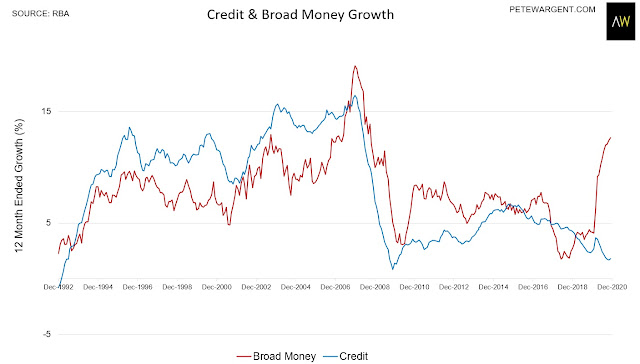Housing credit growth jumped in December to an 18-month high of 3.54 per cent.
Owner-occupier credit growth increased to 5.6 per cent.
Monthly investor credit growth increased for a fifth consecutive month, albeit in annual terms investor credit growth was only flat and recovering from record lows.
With the share of interest-only loans now at series lows, more debt is being paid down.
But even so, the housing credit impulse is pointing to higher capital city housing prices in 2021 as investors return.
Overall, 2020 was a dismal year for credit growth at just 1.8 per cent, with broad money growth surging to 12.6 per cent driven by stimulus.
---
Loan holidays ease
In other news, deferred loans continued to decline to 1.9 per cent in December, according to APRA's latest figures.
Source: APRA
Housing loan deferrals were generally down to around 2 per cent or lower, except in post-lockdown Victoria where deferrals were considerably higher.
Source: APRA
Catastrophising commentators are still hanging their hats on a 31 March day of reckoning, but realistically there's very little incentive for lenders to foreclose on the few remaining deferred loans.
Mortgage deferrals have plunged from nearly $200 billion to $42.9 billion - the riskier remaining loans deferred are probably those relating to high-rise units in CBD towers, where rental vacancies have been high.






